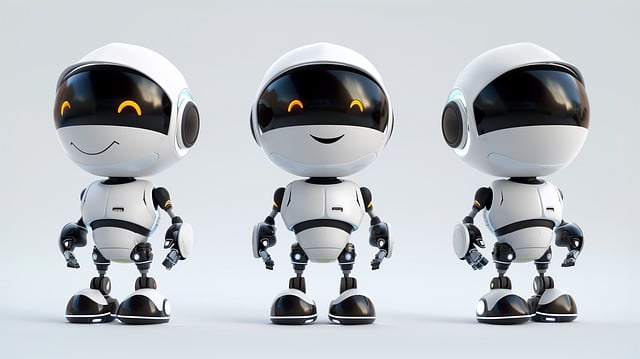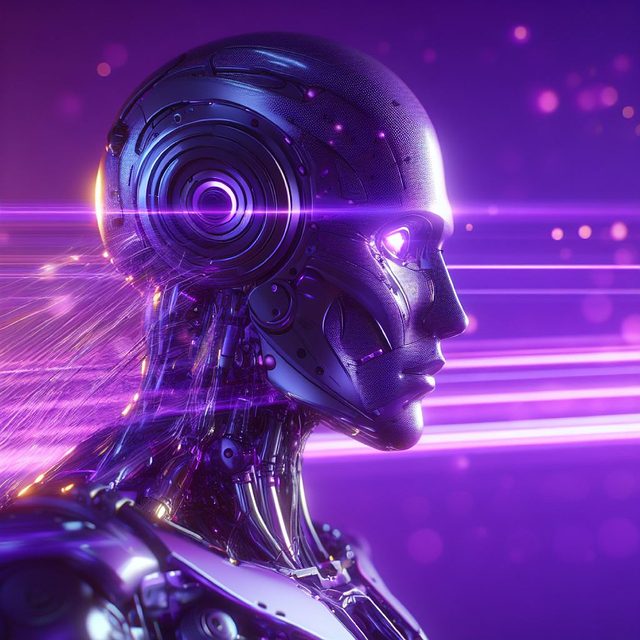The Ochatbot Framework is a versatile and advanced toolkit for developing AI chatbots, integrating sophisticated machine learning algorithms to facilitate effective user interaction through natural language processing. Its modular design allows for the inclusion of components like NLP, NLU, and dialogue management systems, which are essential for adaptable and evolving chatbot performance across various applications such as customer service, information retrieval, entertainment, and personal assistance. Ochatbot leverages cutting-edge AI technologies to handle complex queries, maintain context in conversations, and provide engaging interactions. Its flexibility and scalability make it indispensable for businesses aiming to incorporate intelligent virtual assistants that cater to dynamic user requirements, enhancing user engagement through sophisticated conversational agents. In developing Ochatbot-powered chatbots, a focus on data collection representing diverse conversational scenarios and intents, careful model selection, and iterative testing is crucial for achieving accuracy, contextual relevance, and continuous performance improvement. The integration of NLP enhances these chatbots’ ability to interpret human language, manage complex dialogues, and embody personality or brand values. Ochatbot systems enable businesses to deliver immediate, uniform support across various digital platforms, significantly improving the user experience in customer service and engagement scenarios. Continuous testing, feedback analysis, and optimization are key to refining these chatbots for superior performance over time.
Embarking on the journey to create a scripted AI chatbot can be both an exciting and complex endeavor. This article delves into the intricacies of designing, training, and refining your own chatbot using the robust Ochatbot framework. We’ll explore the core components and technologies essential for building a functional chatbot AI system, as well as the nuances of integrating advanced natural language processing (NLP) capabilities to enhance conversational interactions. From data collection and model selection to iterative testing with user feedback and performance metrics, gain insights into the process that transforms a concept into an effective AI chatbot. Whether you’re new to AI or looking to improve your existing bot, this guide will provide valuable knowledge on chatbots AI, ensuring your chatbot can converse with users seamlessly and effectively.
- Understanding the Foundations of AI Chatbots with Ochatbot Framework
- Designing the Architecture: Core Components and Technologies for Chatbot AI Systems
- Training Your Chatbot AI: Data Collection, Model Selection, and Supervised Learning Processes
- Integrating Natural Language Processing (NLP) into Chatbots AI for Enhanced Conversational Capabilities
- Testing and Iteration: Refining Your Chatbot AI with User Feedback and Performance Metrics
Understanding the Foundations of AI Chatbots with Ochatbot Framework

When venturing into the realm of artificial intelligence chatbots, it’s crucial to have a solid understanding of their underlying technologies and frameworks. The Ochatbot Framework stands out as a robust solution for building advanced AI chatbots, offering a comprehensive suite of tools and libraries that facilitate the design, development, and deployment of these intelligent agents. At its core, Ochatbot leverages state-of-the-art machine learning algorithms to interpret user input accurately and generate contextually relevant responses. The framework’s architecture is modular, allowing developers to integrate various AI chatbot ai components like natural language processing (NLP), natural language understanding (NLU), and dialogue management systems seamlessly. This modularity not only streamlines the development process but also ensures that chatbots can adapt and evolve over time, becoming more proficient and user-friendly as they interact with more individuals.
Incorporating AI chatbots into applications and services can significantly enhance user engagement by providing immediate, interactive assistance. The Ochatbot Framework’s emphasis on flexibility and scalability means that chatbot ai solutions can be tailored to a wide array of use cases, from customer service and information retrieval to entertainment and personal assistants. The framework’s utilization of cutting-edge AI technologies ensures that chatbots built upon it are capable of understanding complex queries, maintaining context over multiple interactions, and delivering coherent, informative, and engaging conversations. By harnessing the power of AI chatbots, businesses and developers can create intelligent virtual assistants that meet the evolving needs of users, making Ochatbot a valuable asset in the toolkit of any AI practitioner looking to implement chatbot technology into their systems.
Designing the Architecture: Core Components and Technologies for Chatbot AI Systems

In the realm of artificial intelligence, crafting an effective AI chatbot, often referred to as an Ochatbot or AI chatbot, involves a meticulously designed architecture that encompasses various core components and technologies. At the heart of any chatbot AI system lies natural language processing (NLP), which enables the chatbot to understand and interpret human language. Advanced NLP algorithms are integral for parsing text and generating responses that are coherent and contextually relevant. Additionally, machine learning plays a pivotal role in training these systems to recognize patterns, learn from interactions, and improve over time. This is achieved through a combination of supervised and unsupervised learning techniques, which allow the chatbot AI to handle a wide array of queries with increasing proficiency.
To ensure the chatbot AI system functions effectively, developers often utilize frameworks such as TensorFlow or PyTorch for their robustness and flexibility in handling complex machine learning tasks. Integration with APIs from platforms like OpenAI’s GPT-3 can provide the chatbot with a vast repository of language models that enhance its conversational abilities. Moreover, employing a well-structured database to store and retrieve information as needed is crucial for providing accurate responses. The integration of these components within a scalable infrastructure, typically using cloud services like AWS or Azure, ensures that the chatbot AI can manage a high volume of interactions without compromising on performance. In essence, designing the architecture for a chatbot AI system involves a symphony of technologies and components working in harmony to deliver an intelligent and responsive conversational agent.
Training Your Chatbot AI: Data Collection, Model Selection, and Supervised Learning Processes

To effectively train your AI chatbot, leveraging robust data collection and model selection is paramount in the development process. The foundational step involves gathering a diverse dataset that encompasses a wide range of conversational scenarios and intents. This dataset should be representative of the target audience’s language use, including colloquialisms, slang, and various dialects to ensure the chatbot AI can understand and engage with users in a natural and intuitive manner. Once the data is collected, the next critical phase is model selection. There are numerous AI chatbot models available, each with its strengths and ideal use cases. It’s essential to choose a model that aligns with your specific objectives for the chatbot, considering factors like language processing capabilities, domain specialization, and scalability.
After selecting the appropriate model, the supervised learning process begins. This involves training the AI chatbot using labeled data where the correct responses are provided alongside the input data. The chatbot AI learns from these examples, optimizing its algorithms to predict the most accurate and contextually relevant replies. Throughout this phase, iterative testing is crucial to refine the model’s performance. By adjusting parameters and retraining with additional data, the chatbot AI can be fine-tuned to handle a broader range of conversations, improving its accuracy and effectiveness over time. This meticulous process of training, testing, and retraining using Ai chatbots technology ensures that your AI chatbot becomes more adept at understanding and responding to user queries in a manner that feels human-like and engaging.
Integrating Natural Language Processing (NLP) into Chatbots AI for Enhanced Conversational Capabilities

Integrating Natural Language Processing (NLP) into AI-driven chatbots significantly enhances their conversational capabilities, transforming simple text exchanges into nuanced and natural interactions. Utilizing advanced Ochatbot technologies allows these systems to understand and process human language with remarkable precision. This sophistication enables chatbot AI to interpret context, manage complex dialogue, and even exhibit a degree of personality or brand alignment, making interactions more engaging for users.
To effectively implement NLP in chatbots AI, developers often turn to established frameworks and libraries such as TensorFlow, PyTorch, and spaCy. These tools facilitate the training of machine learning models that can parse language, recognize sentiment, and generate appropriate responses. The integration of these Ai chatbots into customer service platforms, social media interfaces, and more, not only streamlines communication but also provides scalable solutions capable of handling a multitude of simultaneous conversations without sacrificing response quality or coherence. This integration is pivotal for businesses aiming to provide instant, consistent, and human-like support across various channels, thereby elevating the overall user experience. Chatbots AI with NLP at their core are becoming increasingly adept at mimicking human conversational nuances, making them indispensable tools in the customer service and engagement domains.
Testing and Iteration: Refining Your Chatbot AI with User Feedback and Performance Metrics

When developing an AI chatbot, testing and iteration are pivotal to refining its performance and ensuring it meets user expectations effectively. To begin with, integrating Ochatbot systems into your application allows for the collection of valuable user feedback, which is instrumental in understanding how the chatbot AI interacts with real users. This data should be analyzed meticulously, focusing on the chatbots AI’s ability to comprehend and respond appropriately to various inputs. By scrutinizing conversation logs and pinpointing areas where the chatbot falters or misunderstands user intent, developers can make targeted improvements to the natural language processing algorithms.
Moreover, leveraging performance metrics is essential in gauging the efficacy of your Ochatbot. These metrics include response accuracy, user satisfaction scores, and interaction duration. By continuously monitoring these aspects, you can iterate on the chatbot AI’s design, optimizing its responses to be more contextually relevant and its learning capabilities to adapt to user queries more dynamically. AI chatbots, particularly those utilizing machine learning, benefit from this iterative process as they can be retrained with new data to refine their understanding of language nuances and conversational context. By adopting a cycle of testing, analyzing feedback, and optimizing performance, your Ochatbot will evolve into a more robust, user-friendly, and effective AI chatbot tool.
In conclusion, crafting a scripted AI chatbot, as discussed through the lenses of the Ochatbot Framework and the core components and technologies integral to chatbot AI systems, involves a meticulous blend of foundational understanding and advanced technical proficiency. From training your chatbot AI using data-driven approaches like model selection and supervised learning to integrating sophisticated NLP capabilities for enhanced conversational interactions, each step is pivotal in developing an effective chatbot AI. The iterative process of testing with real users and measuring performance metrics is essential for refining the chatbot’s responses and improving its overall utility. By adhering to these methodologies and leveraging the latest advancements in AI chatbots technology, developers can create chatbots that not only mimic human-like conversation but also deliver consistent, accurate, and valuable interactions to users across various domains.
